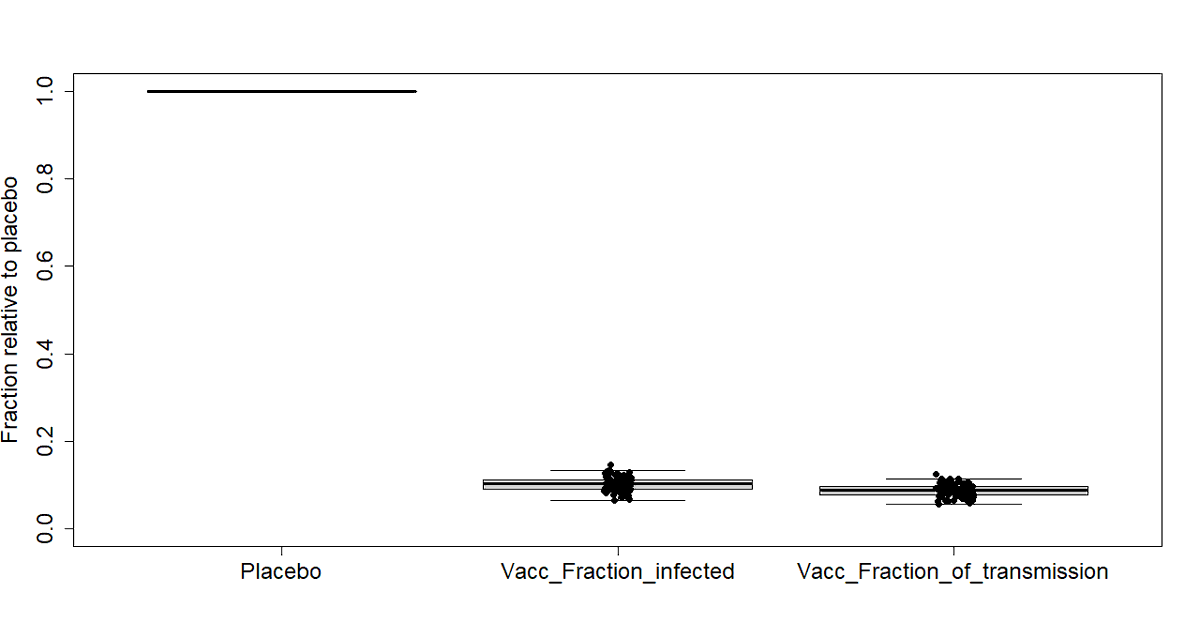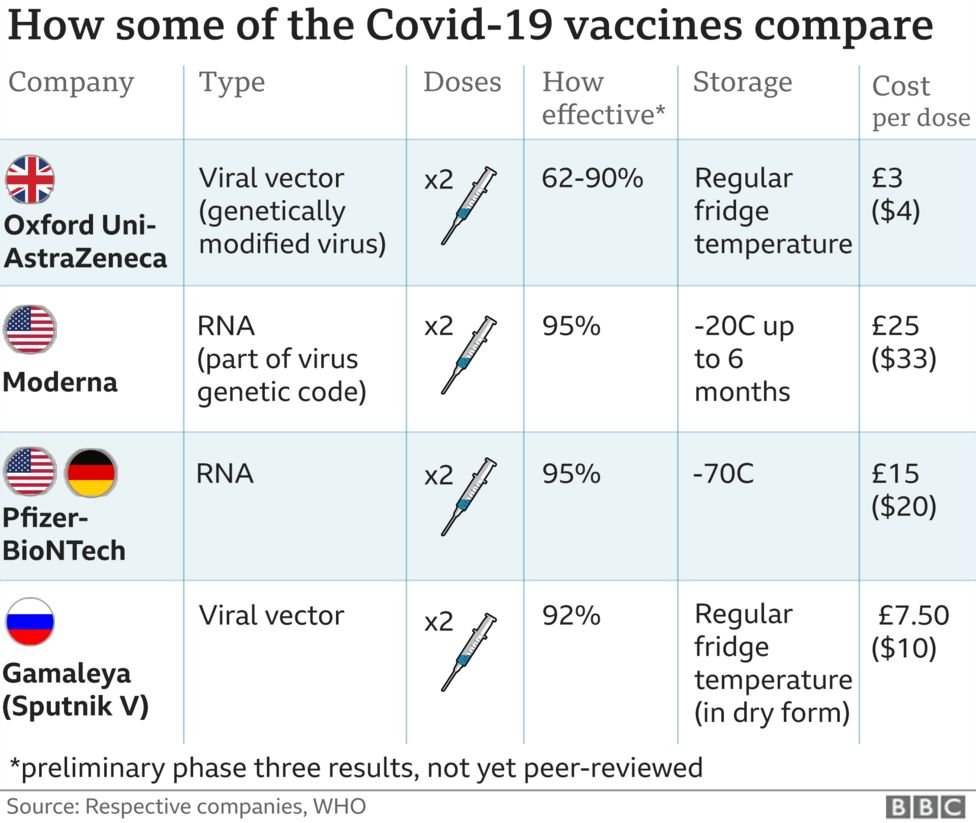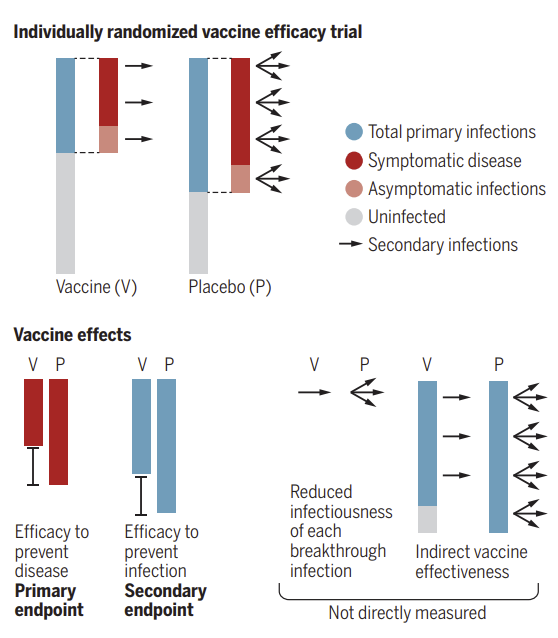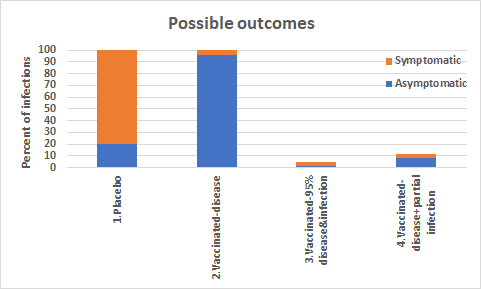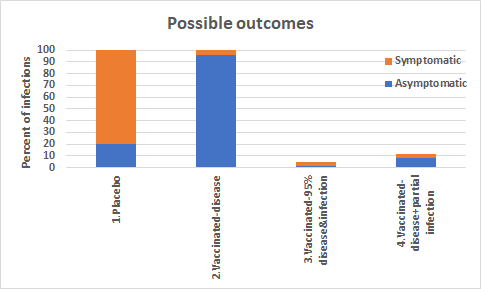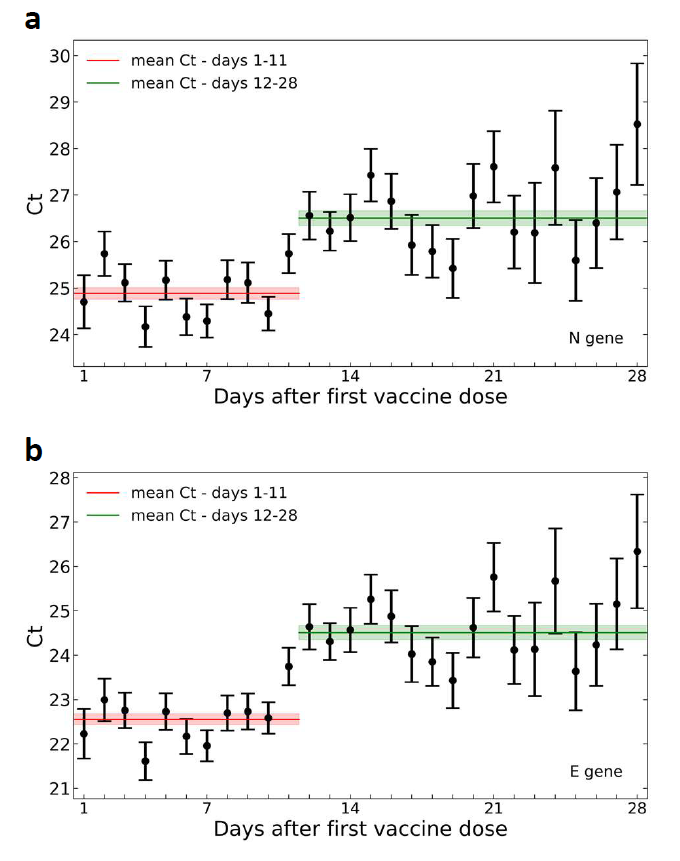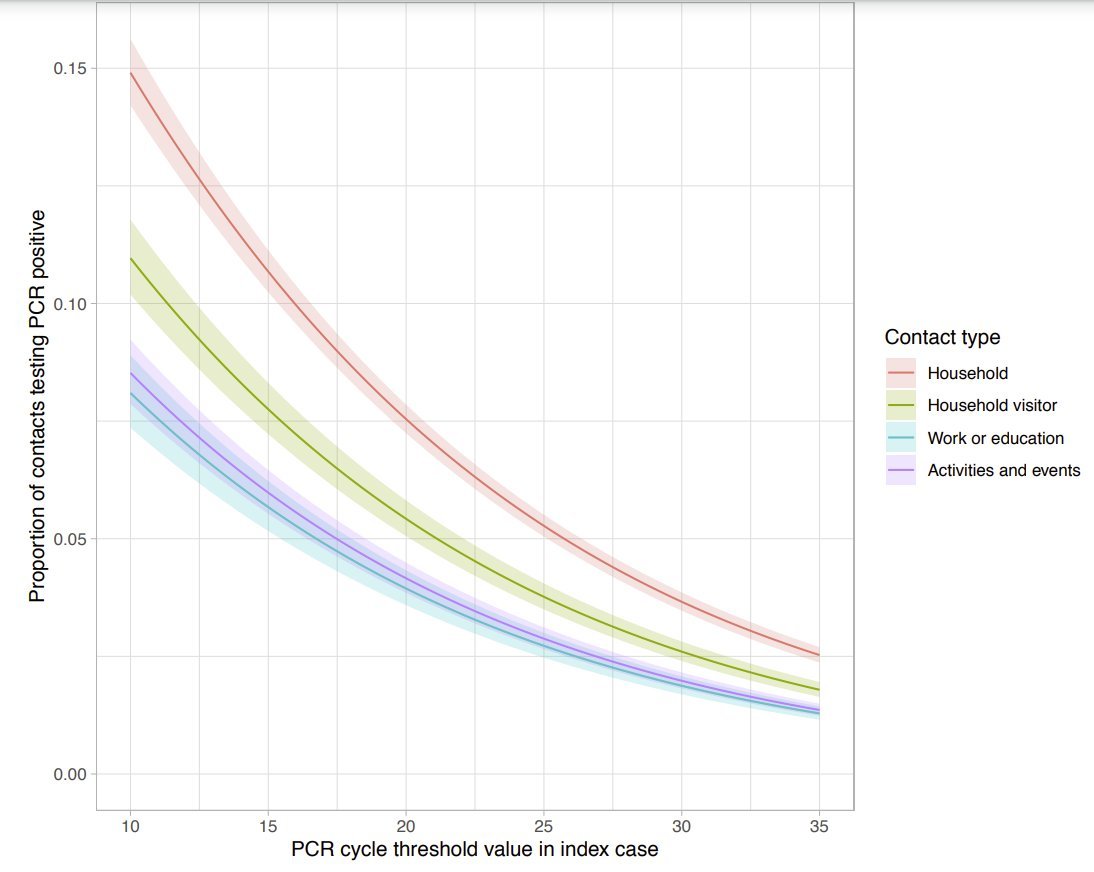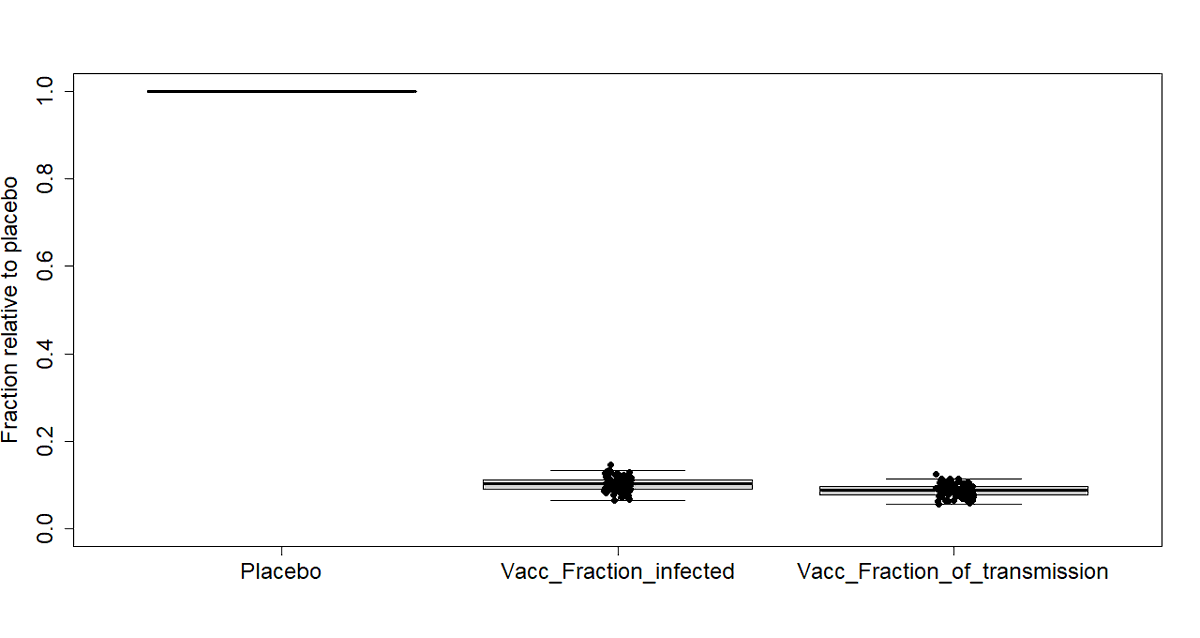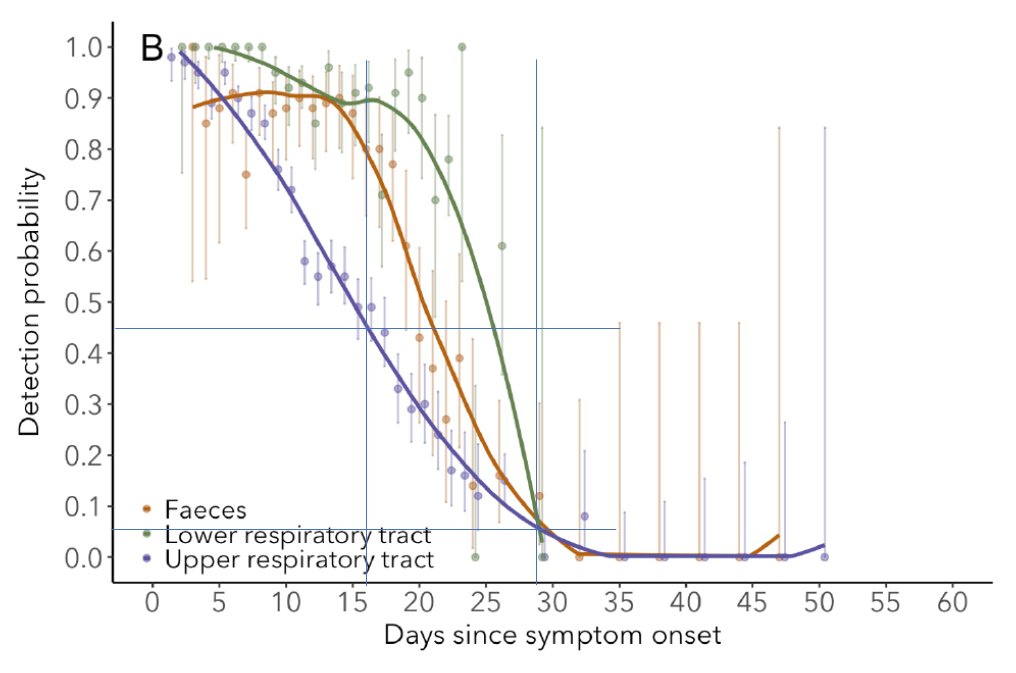Vaccine efficacy in blocking infection & transmission
(I think) We can now estimate the (minimum) reduction in transmission from the Moderna vaccine.
Thread
tl;dr Moderna vaccine blocks >90% (87-93%) of infections & 91% (89-94%) of transmission.
*Critiques welcome!
(I think) We can now estimate the (minimum) reduction in transmission from the Moderna vaccine.
Thread
tl;dr Moderna vaccine blocks >90% (87-93%) of infections & 91% (89-94%) of transmission.
*Critiques welcome!
Background
By now, everyone knows there are 4 vaccines "approved for full use" (NY Times wording) in one or more countries: Pfizer, Moderna, Sputnik 5, Astrazeneca https://www.nytimes.com/interactive/2020/science/coronavirus-vaccine-tracker.html
By now, everyone knows there are 4 vaccines "approved for full use" (NY Times wording) in one or more countries: Pfizer, Moderna, Sputnik 5, Astrazeneca https://www.nytimes.com/interactive/2020/science/coronavirus-vaccine-tracker.html
These 4 have shown moderate (Astrazeneca) to very high efficacy in reducing "symptomatic" infections.
https://www.bbc.com/news/world-asia-china-55212787
https://www.bbc.com/news/world-asia-china-55212787
Their efficacy in reducing severe disease is thought to be higher, but there is less data than for mild/moderate infections b/c severe infections are rarer. I wrote a detailed thread about this for Pfizer vaccine: https://twitter.com/DiseaseEcology/status/1336446195284070400
The big remaining Q is whether vaccines just reduce disease or also block infection or reduce transmission. I wrote a thread on this too.
https://twitter.com/DiseaseEcology/status/1339093180151603202
Smarter people than me ( @mlipsitch @nataliexdean) are also talking about this. https://science.sciencemag.org/content/370/6518/763/tab-pdf
https://twitter.com/DiseaseEcology/status/1339093180151603202
Smarter people than me ( @mlipsitch @nataliexdean) are also talking about this. https://science.sciencemag.org/content/370/6518/763/tab-pdf
It matters enormously, both in terms of if is safe for vaccinated people to hug ( @JuliaLMarcus https://www.theatlantic.com/ideas/archive/2021/01/giving-people-more-freedom-whole-point-vaccines/617829/), & for who we should allocate the vaccine to ( https://science.sciencemag.org/content/early/2021/02/01/science.abe6959).
Many people know that neither the Pfizer or Moderna trial included regular swabbing of participants, so it was difficult to quantify asymptomatic infections. In fact, the ~95% efficacy against symptomatic infections left a wide range of possibilities open.
Here's a graph illustrating possibilities. We know from meta-analysis @nicolamlow that 20% of infections are asymptomatic https://doi.org/10.1371/journal.pmed.1003346 (see 1.placebo group). If vaccine only reduced disease but not infections, we'd get option 2 - no reduction in total infection but...
a 95% reduction in symptomatic infections but a huge INCREASE in asymptomatic infections.
If vaccination reduced both symptomatic & asymptomatic infections 95% we get outcome 3. Finally, it's possible to get outcome b/w 2 & 3, shown as outcome 4.
If vaccination reduced both symptomatic & asymptomatic infections 95% we get outcome 3. Finally, it's possible to get outcome b/w 2 & 3, shown as outcome 4.
What do the data indicate?
A *CRUCIAL* bit of data was shared from Moderna trial based on swabs taken on day of 2nd dose. These data showed a 61.5% reduction in infections on this day. But was this estimate of reduction in total infections or asymptomatic? https://twitter.com/DiseaseEcology/status/1339093206122655747
A *CRUCIAL* bit of data was shared from Moderna trial based on swabs taken on day of 2nd dose. These data showed a 61.5% reduction in infections on this day. But was this estimate of reduction in total infections or asymptomatic? https://twitter.com/DiseaseEcology/status/1339093206122655747
The difference is *crucial*. If reduction is in total infections, then it's better than outcome 2, but only 2/3 of the way towards outcome 3. If reduction is in asymptomatic infections then much better b/c w already know symptomatic infections are 95% lower.
I emailed authors of study (DOI: 10.1056/NEJMoa2035389) & Dr. El Sahly was kindly able to confirm that the swabs represent truly asymptomatic infections. This is fantastic because it indicates we have outcome 4 - reductions of 95% in symp. & 61.5% in asymp infections.
Finally, a very recent paper from @RoyKishony Israel suggested that infections following vaccination reduces viral load by ~2 Ct starting 12d after 1st dose ( https://doi.org/10.1101/2021.02.06.21251283)
Another recent set of papers showed that lower viral loads are strongly correlated with lower transmission
https://twitter.com/DiseaseEcology/status/1357117171369824258
https://twitter.com/DiseaseEcology/status/1357117171369824258
Linking these last two datasets is a little tricky given diffs in Ct b/w labs & logistic relationship b/w Ct & transmission- I've done a back of the envelope version below. Also vaccine from Israel study is Pfizer, not Moderna. This only affects transmission efficacy calculation.
If we put this all together, I *think* we can estimate the (minimum) reduction in both infection & transmission from vaccinated individuals. *Minimum* b/c reduction in asymptomatic infections & viral load is based on data BEFORE 2nd dose. Efficacy should improve w/ 2nd dose.
Point estimate:
Infection efficacy: (IE)
0.8*0.95+0.2*0.385=88.3%
Transmission efficacy:
IE*0.93^2 (.93 per log, 2 logs) = 89.9%
Infection efficacy: (IE)
0.8*0.95+0.2*0.385=88.3%
Transmission efficacy:
IE*0.93^2 (.93 per log, 2 logs) = 89.9%
Incorporating uncertainty from each component (except Ct-infectiousness correlation) w/ parametric boostrapping produces median reductions of 90% (87-93%) in infection & 91% (89-94%) of transmission
(Note: many CIs were not symmetrical so median !=mean/point estimates):
(Note: many CIs were not symmetrical so median !=mean/point estimates):
Note that infection reduction calcs are based on Moderna vaccine (no data on asymp infection for Pfizer). As noted above, trans reduction calcs use data from Pfizer, so a little bit of mixing & matching which is less than idea, but vaccines are very similar so prob not far off.
Have I made an error somewhere? If so, please let me know and I'll revise & update.
(or if it's a big error, I'll delete the whole thread).
@mlipsitch @nataliexdean @JoannaMasel @LucaFerrettiEvo
(or if it's a big error, I'll delete the whole thread).
@mlipsitch @nataliexdean @JoannaMasel @LucaFerrettiEvo
Add1:
I made a couple typos (that don't change calcs but confused people; apologies) in showing calcs of point estimates:
Reductions in infection should have been:
0.8*0.95+0.2*0.615=88.3%
Reduction in transmission
1-[(1-0.883)*0.93^2] = 89.9%
I made a couple typos (that don't change calcs but confused people; apologies) in showing calcs of point estimates:
Reductions in infection should have been:
0.8*0.95+0.2*0.615=88.3%
Reduction in transmission
1-[(1-0.883)*0.93^2] = 89.9%
Add2: h/t @taaltree
Reduction in transmission due to lower viral loads from an individual person has more uncertainty than pop estimate calc above. This expands 95% CI quite a bit so reduction for individual is:
91% (84%-96%)
Reduction in transmission due to lower viral loads from an individual person has more uncertainty than pop estimate calc above. This expands 95% CI quite a bit so reduction for individual is:
91% (84%-96%)
Add3: h/t @JamesGWood_UNSW
Data from 2nd swab is point prevalence estimate, not precise measure of all asymp infections. If duration of RNA shedding differs b/w vacc & unvacc, this alters ratio of prev vs # infect. Overall effect on reduction in infection is small if... (cont)
Data from 2nd swab is point prevalence estimate, not precise measure of all asymp infections. If duration of RNA shedding differs b/w vacc & unvacc, this alters ratio of prev vs # infect. Overall effect on reduction in infection is small if... (cont)
ratio of shedding durations is not huge (e.g. <2 or 1/2) b/c 95% efficacy for sympt inf is main effect & asymptomatic prev was (61.5%) lower. I thought I saw data on lower duration of shedding w/ vaccine but can't find it. @RoyKishony @segal_eran
Please link to it if you can.
Please link to it if you can.
Add4: @mlipsitch
Some of the PCR+ swabs @ 2nd dose will be detecting RNA from infections that occurred before vaccine has any efficacy. If we use 12d post-1st dose as cutoff, then if incidence ~constant, using @bennyborremans we can estimate this as...
https://elifesciences.org/articles/60122
Some of the PCR+ swabs @ 2nd dose will be detecting RNA from infections that occurred before vaccine has any efficacy. If we use 12d post-1st dose as cutoff, then if incidence ~constant, using @bennyborremans we can estimate this as...
https://elifesciences.org/articles/60122
Frac of cases days 1:12 of 1:28=12/28
Prob of detecting RNA from these cases (simple linear interpol.): 0.255
Swabs + in vaccine group on day of dose 2= 15
12/28*0.255*15=1.64 swabs still being detected by residual RNA from cases detected on days 1-12
Prob of detecting RNA from these cases (simple linear interpol.): 0.255
Swabs + in vaccine group on day of dose 2= 15
12/28*0.255*15=1.64 swabs still being detected by residual RNA from cases detected on days 1-12
Add5:
Vaccine efficacy in reducing infection (incidence) can be calculated (w/ assumptions) using point prevalence P using eq from doi:10.1016/j.vaccine.2009.04.009 (h/t @mlipsitch)
But, 1-P_V & 1-P_C =~1, b/c
P_V=15/14,711
P_C=39/14,617
so correction (1-P_C)/(1-P_V)=0.998
Vaccine efficacy in reducing infection (incidence) can be calculated (w/ assumptions) using point prevalence P using eq from doi:10.1016/j.vaccine.2009.04.009 (h/t @mlipsitch)
But, 1-P_V & 1-P_C =~1, b/c
P_V=15/14,711
P_C=39/14,617
so correction (1-P_C)/(1-P_V)=0.998

 Read on Twitter
Read on Twitter